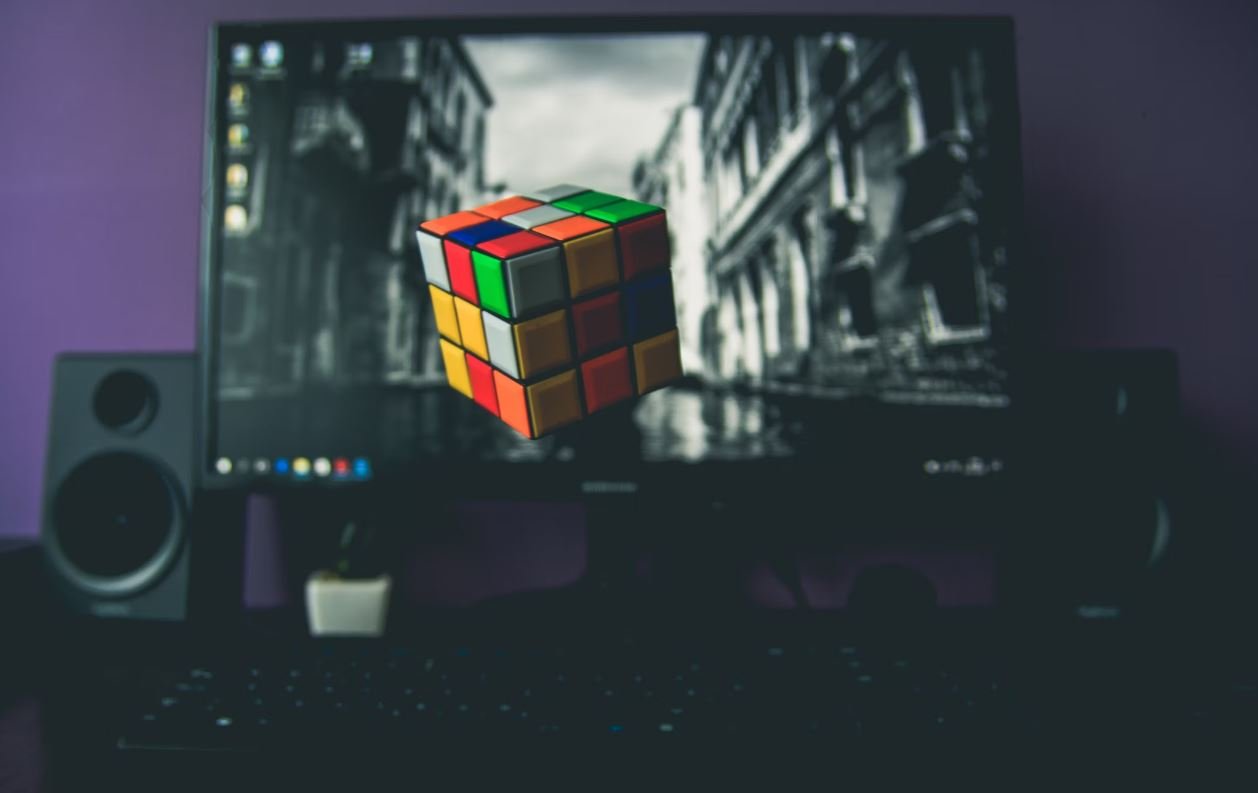AI: Make Your Own Character
In the ever-evolving world of artificial intelligence (AI), new possibilities are arising that allow individuals to create their own AI-powered characters. These characters can be used in various applications such as gaming, storytelling, and virtual assistants. With AI algorithms becoming more advanced, it has become easier for developers and enthusiasts to design and train characters with unique personalities and behaviors. This article explores the exciting field of AI character creation and provides insights into the process and potential applications.
Key Takeaways:
- Artificial intelligence allows for the creation of customizable characters with unique personalities and behaviors.
- AI characters can be used for gaming, storytelling, and virtual assistants.
- Developers can design and train AI characters using advanced algorithms.
Understanding AI Character Creation
AI character creation involves using machine learning algorithms to train virtual characters to exhibit specific traits, actions, and behaviors. Developers can provide their characters with different attributes such as intelligence, empathy, or humor. These characters are designed to behave like humans, understanding and responding to user input or environment stimuli.
By leveraging AI algorithms, developers can create virtual characters that mimic human-like behaviors and interactions.
To create AI characters, developers often use techniques like reinforcement learning and natural language processing. Reinforcement learning enables characters to learn from their environment and improve their decision-making skills over time. Natural language processing allows characters to process and understand human language, enabling realistic conversations and interactions.
The Process of AI Character Creation
The process of AI character creation involves several key steps:
- Conceptualization: Defining the character’s personality traits, appearance, and backstory.
- Data Collection: Gathering relevant data to train the character, such as dialogues, gestures, and responses.
- Training: Using machine learning algorithms to train the character based on the collected data.
- Evaluation: Assessing the character’s performance and making improvements if necessary.
- Integration: Integrating the trained character into the desired application or platform.
Developers have a structured process to design and train AI characters, ensuring they meet specific requirements and exhibit desired behaviors.
Applications of AI Characters
The versatility of AI characters allows for a wide range of applications, including:
- Gaming: AI characters can enhance gaming experiences by providing dynamic and adaptive opponents or companions, enhancing immersion and challenge.
- Storytelling: Authors and creators can use AI characters to bring their stories to life, enabling interactive narratives and personalized experiences for readers or viewers.
- Virtual Assistants: AI characters can serve as virtual assistants, helping users with tasks, answering questions, and providing personalized recommendations.
| Application | Benefits |
|---|---|
| Gaming | Enhanced immersion and adaptive gameplay. |
| Storytelling | Interactive narratives and personalized experiences. |
| Virtual Assistants | Task assistance and personalized recommendations. |
Challenges in AI Character Creation
While AI character creation presents exciting opportunities, it also comes with its own challenges:
- Data Availability: Acquiring high-quality and diverse datasets for training characters can be challenging, impacting their ability to adapt to various scenarios.
- Ethical Considerations: The programming and behavior of AI characters need to adhere to ethical standards, avoiding biases and discriminatory actions.
- Realism vs. Flexibility: Balancing realistic human-like behavior with the need for flexibility and adaptability can be a complex task.
| Challenge | Impact |
|---|---|
| Data Availability | Limits adaptability to diverse scenarios. |
| Ethical Considerations | Maintaining fairness and avoiding bias. |
| Realism vs. Flexibility | Achieving a balance between human-like behavior and adaptability. |
Conclusion
AI character creation opens up new possibilities for developers and enthusiasts to design and train virtual characters with unique personalities and behaviors. These characters can be utilized in various applications, including gaming, storytelling, and virtual assistants. While challenges exist, such as data availability and ethical considerations, the potential benefits make AI character creation an exciting field to explore and innovate within.

Common Misconceptions
AI cannot create unique characters
- AI can generate diverse personality traits and backstories
- AI can create characters with original appearances and clothing styles
- AI can develop complex relationships and interactions between characters
Many people believe that AI is only capable of reproducing pre-existing characters or copying human creations. However, AI algorithms can actually generate unique and original characters. By leveraging machine learning techniques and vast amounts of data, AI can create characters with distinct personalities, appearances, and stories.
AI-generated characters lack depth and emotion
- AI can infuse characters with complex emotions and motivations
- AI can create multilayered characters with internal conflicts
- AI can generate characters that evolve and grow throughout the story
One common misconception is that AI-generated characters are one-dimensional and emotionless. However, with advancements in natural language processing and emotional modeling, AI can produce characters with depth and authentic feelings. These characters can experience a range of emotions, possess internal struggles, and exhibit personal growth over time.
AI cannot create characters that resonate with humans
- AI can analyze human preferences and create relatable characters
- AI can tap into cultural references to develop engaging personalities
- AI can incorporate human feedback to enhance character relatability
Some people believe that AI-generated characters cannot truly connect with human audiences. However, AI algorithms can analyze human preferences, emotions, and cultural references to craft characters that resonate with people. By leveraging data from books, movies, and social media, AI can understand what makes characters relatable and create compelling and engaging personalities.
AI cannot handle unique or niche character concepts
- AI can adapt to unique character concepts by learning from user input
- AI can incorporate niche traits and backgrounds to create distinct characters
- AI can provide creative options for unconventional character concepts
Another common misconception is that AI is only capable of generating generic characters and cannot handle unique or niche concepts. However, AI algorithms can adapt and learn from user input, allowing them to create characters that align with specific and unconventional ideas. By incorporating niche traits, backgrounds, and preferences, AI can generate distinct and tailored characters that embody unique concepts.
AI replaces human creativity in character development
- AI assists in character development but does not replace human creativity
- AI can help overcome creative blocks and spark new ideas
- AI complements human creativity by offering novel perspectives and suggestions
Some people fear that AI will replace human creativity in character development. However, AI serves as a tool to assist and augment human creativity rather than replacing it. AI algorithms can help creators overcome creative blocks, provide inspiration, and offer new ideas. By collaborating with AI, creators can benefit from novel perspectives and suggestions, ultimately enhancing their own creative processes.

AI in Healthcare
In recent years, artificial intelligence (AI) has been making waves in the healthcare industry, revolutionizing the way medical professionals diagnose, treat, and manage various conditions. Here are some noteworthy examples of how AI is being utilized in healthcare settings:
1. AI-Assisted Diagnostics
AI technology has enabled computers to analyze medical images, such as X-rays and MRIs, with extreme accuracy. Researchers at Stanford University have developed an AI system that can diagnose skin cancer with a 91% accuracy rate, rivaling that of dermatologists.
2. Robotic-Assisted Surgery
Robotic surgery systems, guided by AI algorithms, provide surgeons with enhanced precision, control, and visualization during complex procedures. Surgeons at the University of Pennsylvania have successfully performed over 1,000 prostate cancer surgeries using the da Vinci Surgical System, resulting in reduced recovery time and better patient outcomes.
3. AI-Enabled Virtual Assistants
Virtual assistants powered by AI, such as Amazon’s Alexa and Apple’s Siri, are increasingly being used in healthcare settings. These AI-powered assistants can answer patient queries, schedule appointments, and even remind patients to take their medication, improving patient engagement and self-care.
4. Predictive Analytics
AI algorithms can analyze vast amounts of patient data to predict the likelihood of diseases or adverse events. An AI-powered system developed by researchers at Johns Hopkins University is capable of predicting sepsis, a life-threatening condition, up to 28 hours before it becomes clinically evident, allowing for early intervention and potentially saving lives.
5. Intelligent Monitoring Systems
Integrating AI into monitoring systems can help healthcare professionals detect and alert changes in a patient’s condition in real-time. The Masimo Patient SafetyNet, which utilizes AI algorithms, can identify early signs of patient deterioration, reducing the risk of adverse events and improving patient safety.
6. Personalized Treatment Plans
AI technology can analyze vast amounts of patient data, including genetics and medical history, to develop personalized treatment plans. IBM’s Watson for Oncology, for example, can aid oncologists in determining the most effective treatment options by analyzing medical literature, patient records, and clinical guidelines.
7. AI-Powered Drug Discovery
Traditional drug discovery methods are time-consuming and costly. AI algorithms can significantly accelerate the process of identifying potential drug candidates by analyzing vast amounts of data. Atomwise, an AI-driven drug discovery company, has used AI to identify existing drugs that show potential for the treatment of the Ebola virus.
8. Health Monitoring Wearables
Wearable devices, such as smartwatches and fitness trackers, equipped with AI algorithms, can monitor an individual’s vital signs, activity levels, and sleep patterns. This data can provide valuable insights into overall health and help individuals make informed decisions about their well-being.
9. Mental Health Support
AI-powered chatbots and virtual therapists are being employed to provide mental health support and counseling. Woebot, an AI chatbot developed by Stanford researchers, uses cognitive-behavioral therapy techniques to offer immediate support, reduce symptoms of anxiety and depression, and increase emotional well-being.
10. Remote Patient Monitoring
AI-enabled remote patient monitoring systems allow healthcare providers to monitor patients’ health and well-being outside of traditional healthcare settings. These systems can detect early warning signs, reducing hospital readmissions and improving patient outcomes.
With the continuous advancements in AI technology, the healthcare industry is poised for a transformation, offering improved diagnostics, personalized treatments, and enhanced patient care. By harnessing the power of AI, the future of healthcare looks promising indeed.
Frequently Asked Questions
How does AI help in creating custom characters?
AI assists in creating custom characters by providing advanced algorithms and machine learning techniques, allowing users to generate unique and personalized designs based on their preferences. It can analyze vast amounts of data to suggest various combinations of features, styles, and traits to create a character that matches the user’s specifications.
What are the benefits of using AI to make your own character?
Using AI to create your own character offers several benefits, such as:
- Ability to generate an original character without any artistic skills
- Access to a wide range of customization options and styles
- Time-saving, as AI algorithms generate character designs quickly
- Increased flexibility in modifying and adapting the character to meet specific criteria
- Opportunity to explore and experiment with unique combinations and visual elements
Are AI-generated characters considered art?
While AI-generated characters can be visually appealing and creative, the definition of art is subjective. Some may consider AI-generated characters as a form of art due to the innovative algorithms used to create them, whereas others may argue that human creativity and intention are essential aspects of art.
Can I use AI-generated characters for commercial purposes?
The usage rights of AI-generated characters for commercial purposes depend on the specific terms and conditions provided by the AI platform or service. It is crucial to review the licensing agreements and understand the intellectual property rights associated with the generated characters before using them for commercial activities.
Can AI accurately predict the personality traits of a character?
While AI algorithms can analyze patterns and characteristics to make predictions, accurately predicting the personality traits of a character solely based on generated visual features is challenging. Personality traits are complex and rely on various factors beyond visual appearance, such as background story, behaviors, and interactions.
What level of customization can I achieve with AI-generated characters?
AI-generated characters offer a high level of customization. Most platforms allow users to modify elements such as appearance, facial features, body shape, clothing, accessories, and even personality traits. The extent of customization options may vary depending on the AI platform or service being used.
Is AI capable of generating diverse and inclusive characters?
AI has the potential to generate diverse and inclusive characters by incorporating various data sources and training models that prioritize inclusivity. However, biases in the training data or algorithms can still lead to unintentional biases in the generated characters. It is essential for developers and users to be mindful of these biases and work towards creating inclusive character designs.
How can I incorporate AI-generated characters into my digital projects?
To incorporate AI-generated characters into your digital projects, you can typically export or download the generated character assets in common file formats such as PNG, SVG, or JSON. These assets can then be integrated into various digital platforms, including websites, mobile applications, games, or animations, according to the requirements of your project.
What are the limitations of using AI to create characters?
While AI offers powerful tools for character creation, there are some limitations to consider:
- Lack of human artistic intent and creativity
- Possible biases in the generated characters
- Inability to capture complex emotions and personality traits accurately
- Reliance on existing training data, which may result in generic or derivative designs
- Difficulty in achieving originality, as AI-generated characters may resemble existing characters
Can AI-generated characters evolve over time?
AI-generated characters can evolve over time through iterative design processes where users provide feedback and make modifications. Additionally, AI algorithms can learn from user preferences and adapt the character generation process to better suit the individual’s needs, resulting in more personalized and refined character designs.





